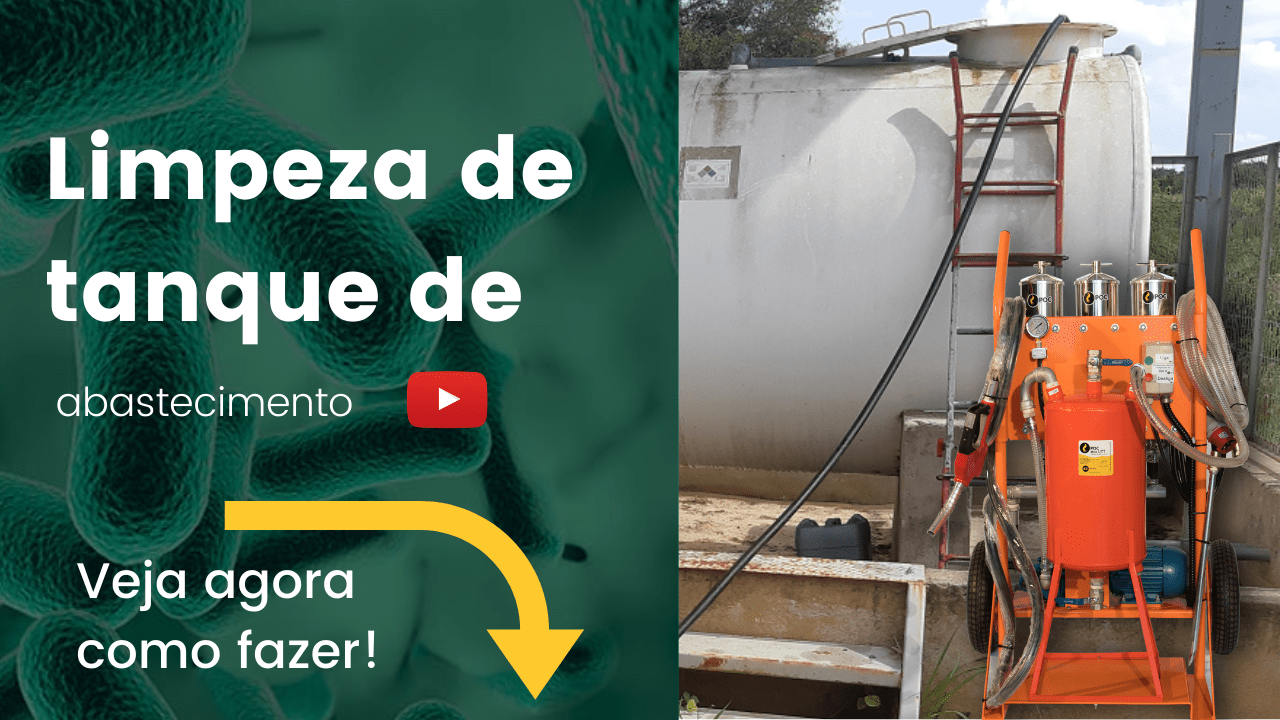In this post you follow a special about water in diesel. To start watch a video of our partner on the topic.
Water in diesel is responsible for a series of problems such as clogging and corrosion of screens, filters and injection systems. If you have a large or small fleet, or even just one machine, you may have experienced some of these problems.
This happens because the water in the diesel causes the growth of fungi and bacteria that end up feeding on the diesel itself. These microorganisms, as they multiply, develop the so-called sludge, a contamination layer that lodges in the boundary between diesel and water. Sludge can also accumulate in pockets at the bottom of storage tanks or machines and vehicles.
Diesel water – where does it come from?
To answer this question we need to understand that water in diesel can be divided into 3 groups or variations: dissolved water; free water; and emulsified water.
Water dissolved in diesel:
Water can be introduced into the diesel through the air entering the tank while it is partially filled. Temperature variations caused by climatic conditions generate water condensation on the walls of the tanks. In machines with high pressure engines, heated fuel is returned to the tank, which also generates water condensation on the tank walls due to the temperature difference. Dissolved water can also come in contact with diesel during transportation or even in contaminated tanks in the storage process.
Free water in diesel:
This variation in the water present in the diesel does not remain mixed with the fuel. Due to the influence of gravity after a certain time, the difference in density causes the water to remain at the bottom, while the oil remains on the surface of the tank. One of the effects of free water in diesel is to reduce the lubricity of the fuel and consequently damage to the moving parts of the engine, mainly to the fuel pump.
Emulsified water in diesel:
It is the one that mixes with diesel oil and is the most difficult to remove. Emulsified water can be formed during pumping, transportation, or even through chemical reactions between the components that make up the fuel. The emulsion formed by the water can vary in color according to the volume or size of the drops. For example, when the drops are larger than 1 micron the emulsion is visible in white.
See water and diesel oil separator filter
Use of water and diesel separator filter
Follow the testimony of a client in the agricultural sector talking about his experience with a water separator filter and its benefits for productivity.
The use of water separating filters is also highly recommended to control this contaminant. These filters can be used in supply tanks or even installed on machines and vehicles.
This purifier prevents the effects caused by fuel contamination such as: Damage to the fuel tank; Difficulties in fuel flow; Injection pump wear; Injection nozzle wear; Premature wear of engine components; Contamination of crankcase oil; Carbonization of the upper parts of the engine.
Water and diesel separator filter drainage
Watch a video of a water separator filter drain installed on a Case Maxxum 135 tractor.
Follow the consultant’s first analysis of the contamination found and the possible effects on the machine’s injection system.
Is it possible to avoid the presence of water in the diesel?
The answer to this question is NO. It is only possible to control its presence through good practices in transport and handling, taking care that the tanks do not contain water and other contaminants.
Another measure that can reduce the amount of water in the diesel is to keep it full at all times, preventing air from entering and condensing into water.
Draining the storage tanks is also a measure that helps to reduce the water already decanted.
Learn more about more control of water contamination in diesel oil, talk to a specialist in Filtration and Microfiltration.





